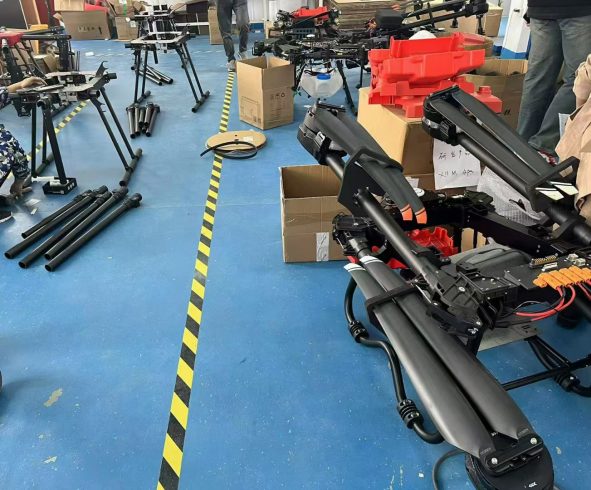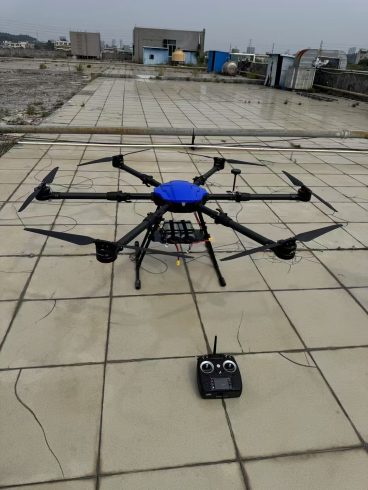![图片[1]-Fertilizer Spraying with Drones: Precision, Efficiency, and Sustainability in Modern Farming-msoen](https://www.msoen.com/wp-content/uploads/2025/04/4e0d9ec2ca214327-576x1024.jpg)
As farmers worldwide grapple with rising input costs and environmental regulations, fertilizer spraying with drones has emerged as a revolutionary solution. By combining cutting-edge technology with eco-friendly practices, agricultural drones are redefining nutrient management, enabling growers to boost yields, reduce waste, and meet sustainability goals. This article explores how drone-based fertilizer application works, its benefits, and how to integrate it into your farming operations.
- The Science of Drone Fertilizer Spraying
Modern fertilizer drones use advanced systems to deliver nutrients with surgical precision:
- Multispectral Imaging: Cameras detect crop health variations, mapping nitrogen-deficient zones at 2cm resolution.
- Variable-Rate Technology (VRT): AI adjusts fertilizer flow rates in real time, applying 20–50% less product than blanket spreading.
- Ultrasonic Nozzles: Produce droplets sized 150–300 microns for optimal leaf adhesion and soil penetration.
Case Study: A Midwest corn farm reduced urea use by 40% while increasing yields by 12% using drone-targeted fertilization.
- Key Benefits of Drone Fertilizer Application A. Unmatched Precision
- Zone-Specific Treatment: Apply fertilizers only where crops need them, avoiding overfeeding healthy areas.
- Root & Foliar Feeding: Drones can switch between soil applications and foliar sprays for micronutrient delivery. B. Cost Efficiency
- Input Savings: Reduce fertilizer use by 30–60%, saving $15–$30 per acre.
- Labor Reduction: One operator can manage drones across 1,000+ acres, cutting labor costs by 70%.
- Fuel Savings: Electric drones consume 90% less energy than tractor-mounted spreaders. C. Environmental Protection
- Runoff Prevention: Precision application lowers nitrate leaching into waterways by up to 80%.
- Soil Health: Avoid compaction caused by heavy machinery in wet fields.
- Emissions Reduction: Drones emit 95% less CO₂ compared to traditional fertilizer spreaders.
- Types of Fertilizers Compatible with Drones A. Liquid Fertilizers
- Water-Soluble NPK: Ideal for foliar spraying to address immediate nutrient deficiencies.
- Organic Solutions: Compost teas or fish emulsions for certified organic farms. B. Granular Fertilizers
- Coated Urea: Slow-release pellets for sustained soil nutrition.
- Micronutrient Mixes: Zinc, boron, or manganese blends for specialty crops. C. Nano-Fertilizers
- Encapsulated Nutrients: Nanoparticles improve absorption rates by 50–70%.
- How to Implement Drone Fertilizer Spraying Step 1: Soil & Crop Analysis
- Use drone-generated NDVI maps and soil sensors to identify nutrient gaps. Step 2: Flight Planning
- Pre-program routes using RTK-GPS for centimeter-level accuracy.
- Set altitude (2–4m) and speed (5–8m/s) based on fertilizer type. Step 3: Application
- Liquid: 10–20L/ha at 30–50µm droplets.
- Granular: 5–10kg/ha with rotary spreader attachments. Step 4: Post-Spray Monitoring
- Re-scan fields to verify nutrient absorption and adjust future treatments.
- Choosing the Right Drone for Fertilizer Spraying Critical Features
- Payload Capacity: 15–25L tanks for large-scale operations.
- Modular Design: Swap between liquid tanks and granular spreaders.
- Battery Life: 25+ minutes with quick-swap batteries. Top Models (Brand-Neutral Overview)
- High-Capacity Drones: Handle 20L+ for wheat, corn, and rice.
- Orchard Specialists: Compact drones with obstacle avoidance for fruit trees.
- Budget Options: 5L drones for smallholders or trial plots.
- Overcoming Challenges A. Initial Investment
- Entry-level drones: $3,000–$5,000.
- Solution: Leasing programs or USDA/NRCS grants. B. Regulatory Compliance
- FAA Part 107 (U.S.) or local drone pilot certifications.
- Solution: Vendor-provided training courses. C. Weather Limitations
- Avoid spraying in winds > 10m/s or heavy rain.
- Solution: Use weather-resistant drones with IP67 ratings.
- The Future of Drone Fertilization
- AI-Powered Prescriptions: Drones auto-generate fertilizer plans using soil and weather data.
- 5G-Enabled Swarms: Fleets of 50+ drones collaborating on 10,000-acre farms.
- Carbon Credit Integration: Quantify emission reductions for sustainability certifications.
Conclusion: Fertilizing Smarter, Not Harder
Drone fertilizer spraying represents a paradigm shift in agriculture, merging precision, efficiency, and ecological stewardship. By adopting this technology, farmers can reduce costs, enhance yields, and contribute to a greener food system.











暂无评论内容